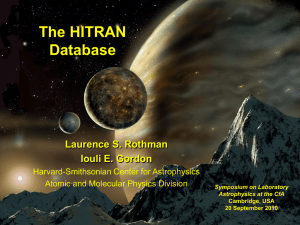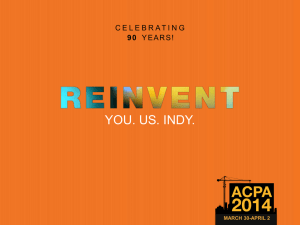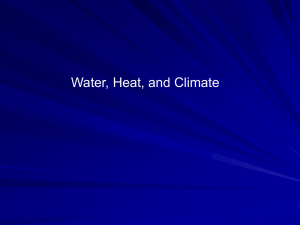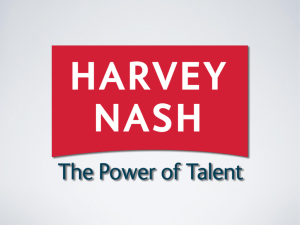Cal Gavin Presentation - Intensified Heat Transfer Technologies for
advertisement
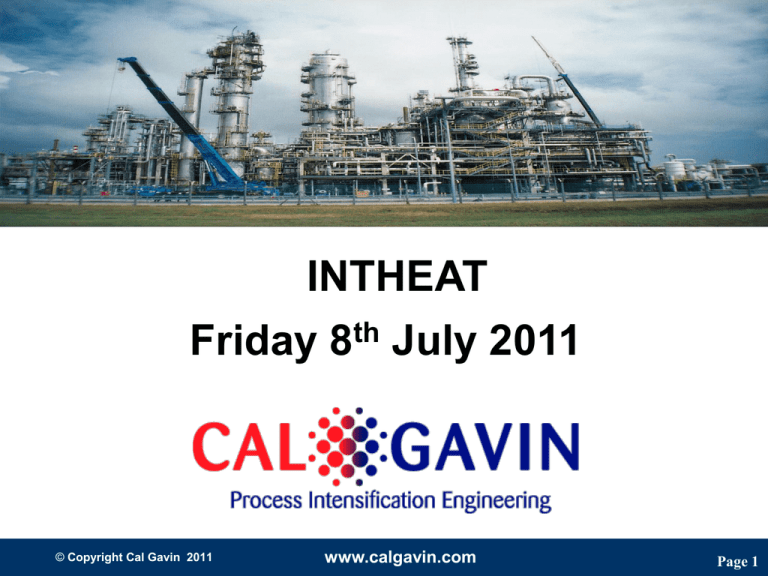
Enhancing performance of tubular heat exchangers using hiTRAN Systems INTHEAT Friday 8th July 2011 © Copyright Cal Gavin 2011 www.calgavin.com Page 1 Providing solutions to: • • • • • • Increase plant capacity Reduce energy costs Increased equipment performance Reduce production costs Provide operational flexibility Increase plant profit ! © Copyright Cal Gavin 2011 www.calgavin.com Page 2 • Identify equipment and control system limitations • Review technology options to overcome limitations • Incorporate selected retrofit technologies • Simulate performance of new production plan • Implement low cost retrofit solutions © Copyright Cal Gavin 2011 www.calgavin.com Page 3 hiTRAN tube-side heat transfer enhancement system – • increases heat transfer up to 8 times • reducing fouling by increasing fluid sheer Direction of Flow © Copyright Cal Gavin 2011 www.calgavin.com Page 4 How hiTRAN Wire Matrix Elements work • hiTRAN Matrix Elements remove the boundary layer and mix it with the bulk flow. • Fluid from the centre is displaced in the direction of the wall • Residence time of the fluid at the wall is considerably reduced. • Improved heat and mass transfer and reduced fouling hiTRAN Matrix Element Blue dye: Red dye: A) Laminar flow © Copyright Cal Gavin 2011 B) turbulent flow www.calgavin.com Page 5 hiTRAN video – how hiTRAN works © Copyright Cal Gavin 2011 www.calgavin.com Page 6 Case study LUKOIL Refinery, Volgograd Feed Effluent Exchanger Problem Plant capacity limited by low heat exchanger performance (mal-distribution) Recovered heat was 19 MW but …… 23.1 MW needed to meet target temperature Fired Heater performance much too low! 4.1 MW not available from Fired Heater High on-going energy cost if upgraded Plant expansion now requires 28MW © Copyright Cal Gavin 2011 www.calgavin.com Page 7 Case study Lukoil - refinery Volgograd Optimised Engineering Solution • Study identified hiTRAN System would solve the problem • Reduce maldistribution on tubeside - balance flow • Increase tubeside heat transfer • hiTRAN System retrofitted in just 2 weeks © Copyright Cal Gavin 2011 www.calgavin.com Page 8 Case study Benefits to Lukoil • hiTRAN System increased performance from 27.8MW to 32.4MW • 4.6 MW energy load saving without requiring new fired heater • Fuel saving of over US$500K per year (at full flow rate) • Enables higher plant throughput • Increased plant profit! © Copyright Cal Gavin 2011 www.calgavin.com Page 9 Case study Rosneft - Novokuibyshevsk New Air Coolers with hiTRAN System enhancement Benefits: • Smaller units • Less bays • Increased efficiency • Reduced capital costs © Copyright Cal Gavin 2011 www.calgavin.com Page 10 Case study Rosneft - Novokuibyshevsk Design Comparisons No. of bays/bundles No of passes Flow length m Tubeside htc W/m2OC Overall htc (bare) W/m2OC Total Surface Area m2 Plot space m2 Weight tonnes Total Fan Power kW Pressure Loss, Bar Annual cost of electrical fan power US$ © Copyright Cal Gavin 2011 Empty tube design 5/10 12 108 44 35 18,100 123.3 84 165 0.71 105,000 www.calgavin.com design 1/2 2 18 307 180 3,600 24.1 16 33 0.71 21,000 Page 11 Cal Gavin’s Deliverables Work Package 2: “Combined tube-side and shell-side heat exchanger enhancement” •D2.1: Report on state of the art of heat transfer enhancement technologies and their benefits. (May 2011) •D2.2: Report on tube side and shell side enhancement research (August 2011) •D2.3: Mathematical models and the software implementation of tube- and shell side heat transfer enhancement ( May 2012) © Copyright Cal Gavin 2011 www.calgavin.com Page 12 State-of-art of heat transfer enhancement technologies and their benefits • D2.1, 6 month • Heat Transfer Promoters Twisted Tapes, Static mixers, Helically-coiled wires, Core Tubes and hiTRAN turbulators • Comparisons Between hiTRAN, Twisted tapes and coiled wires • The Influence of the boundary layer and overcoming the limitations in the heat transfer. © Copyright Cal Gavin 2011 www.calgavin.com Page 13 Report on tube side and shell side enhancement research • D2.2, 9 month Other deliverables Cal Gavin is involved in • WP1 ‘Analysis of intensified heat transfer under fouling’ ( 4 person months) • WP4 ‘Design, retrofit and control of intensified heat recovery networks’ (3 person months) • WP5 ‘Putting into practice’ (2 person months) • WP6 ‘Technology transfer’ (2 person months) © Copyright Cal Gavin 2011 www.calgavin.com Page 14 Thank-you for listening Questions? www.calgavin.com © Copyright Cal Gavin 2011 www.calgavin.com Page 15

